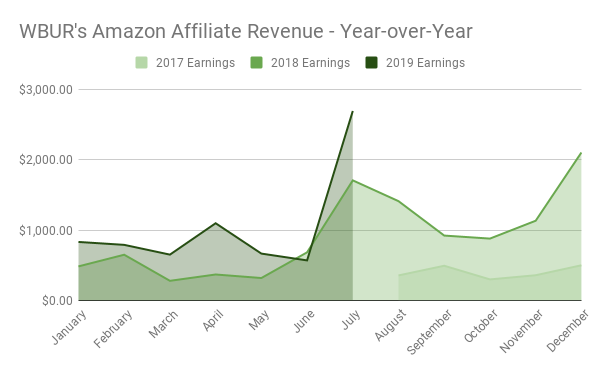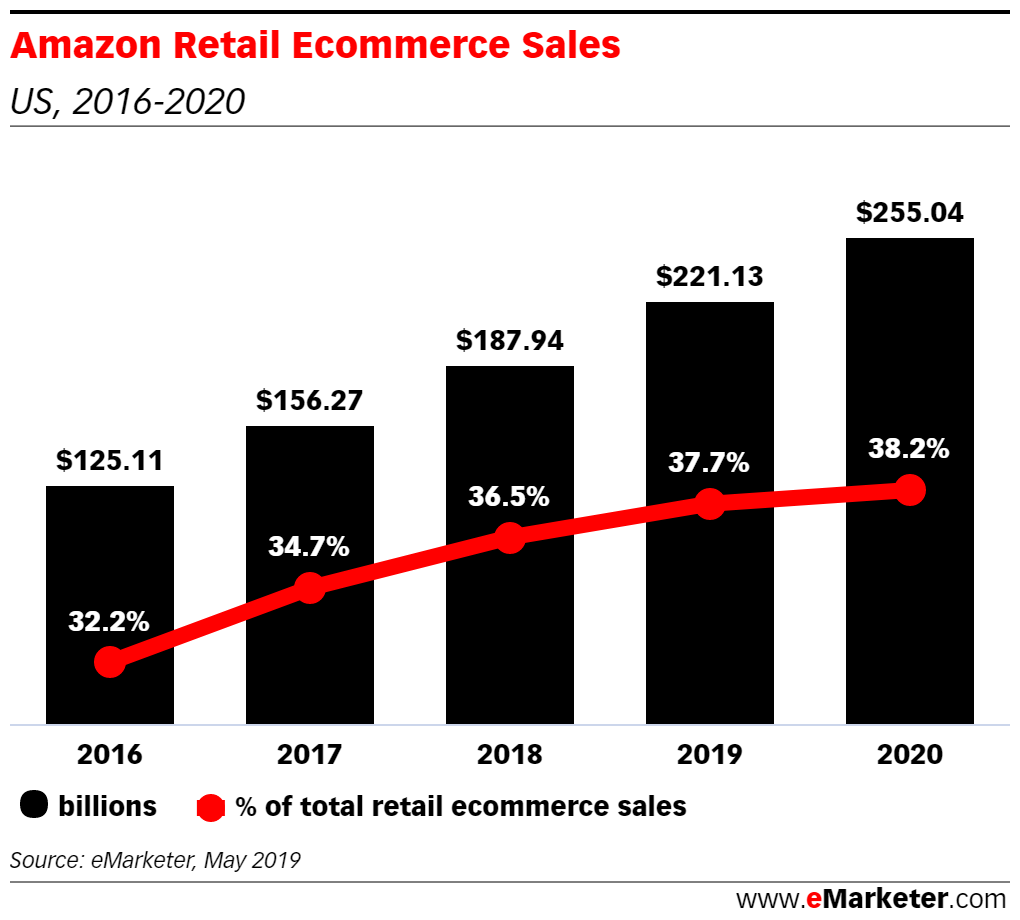[This is Part 4 of a series of blog posts for WBUR BizLab’s Affiliate Marketing Project, funded by the Lenfest Institute.]
While WBUR Guides did not turn a profit, the process of building the site and testing promotion methods revealed critical insights into the prospects for affiliate marketing within Public Media web properties.
WBUR’s Future with Affiliate Marketing
Should we make a similar effort again, we’d use Facebook ads only for testing content and for email acquisition. Also, we now know not to embark on such an effort without securing a commitment to promote the content extensively where our regular readers and listeners are most engaged, which is on-air and on www.wbur.org.
At WBUR, we’ve seen steady year-over-year revenue growth from Amazon ever since we began inserting their affiliate links into our book articles in August of 2017:
Amazon retail eCommerce sales in the US have shown consistent growth, and eMarketer projects further growth in the future for Amazon and US eCommerce sales in general. Barring unpredictable macro-trends in the economy, we expect that consistently applied affiliate links on existing content will expand revenue each year for the near-future.
The clean and transparent design of the guides site attracted praise from our underwriting department, so we may work with them to repurpose the design of WBUR Guides for sponsored content. Additionally, the data yielded from our more than 120 ad tests will be helpful in focusing how we pitch sponsored content to potential underwriters. Thanks to those tests, we know that our audience is interested in women’s shoes and sustainable home goods, and we know that the audience coming from www.wbur.org is more receptive to content that is closer to journalism in its style.
Our Advice to Public Media Organizations
Following these tenets should help you prepare to engage in affiliate marketing at your organization and accurately measure your audience’s reaction once you’re ready to promote it.
- Begin by promoting Amazon affiliate links. The variety of products from their site means you can promote almost anything, and see what has traction. When you’ve identified your niche, find a vendor in CJ which caters to that category and take advantage of CJ’s higher commission.
- Publish and test a variety of content, including different writing styles. The results may surprise you. Until we ran tests which proved otherwise, we’d expected vegetable delivery to outperform women’s shoes.
- Track everything. Track each step that your audience takes so you can understand where they’re hitting snags, and determine which audience is most likely to yield product-clicks.
- Organic Traffic is your most valuable asset. Work with your editorial team to integrate affiliate marketing content and promote affiliate content within your news site as much as is possible. The closer the affiliate content is to your core content the more your audience will embrace it.
- Facebook is great for testing, but using it simply to advertise your content is unlikely to produce a profit. You’ll always pay more for your audience than they yield in referral fees.
If you haven’t already, check out our previous posts in this series on affiliate marketing: The Challenge, The Strategy, and The Numbers & The Lessons.
If you have any questions about this experiment, or if you’re planning affiliate marketing content, please feel free to contact me at tbfuller@bu.edu or on Twitter at @ted_fuller

